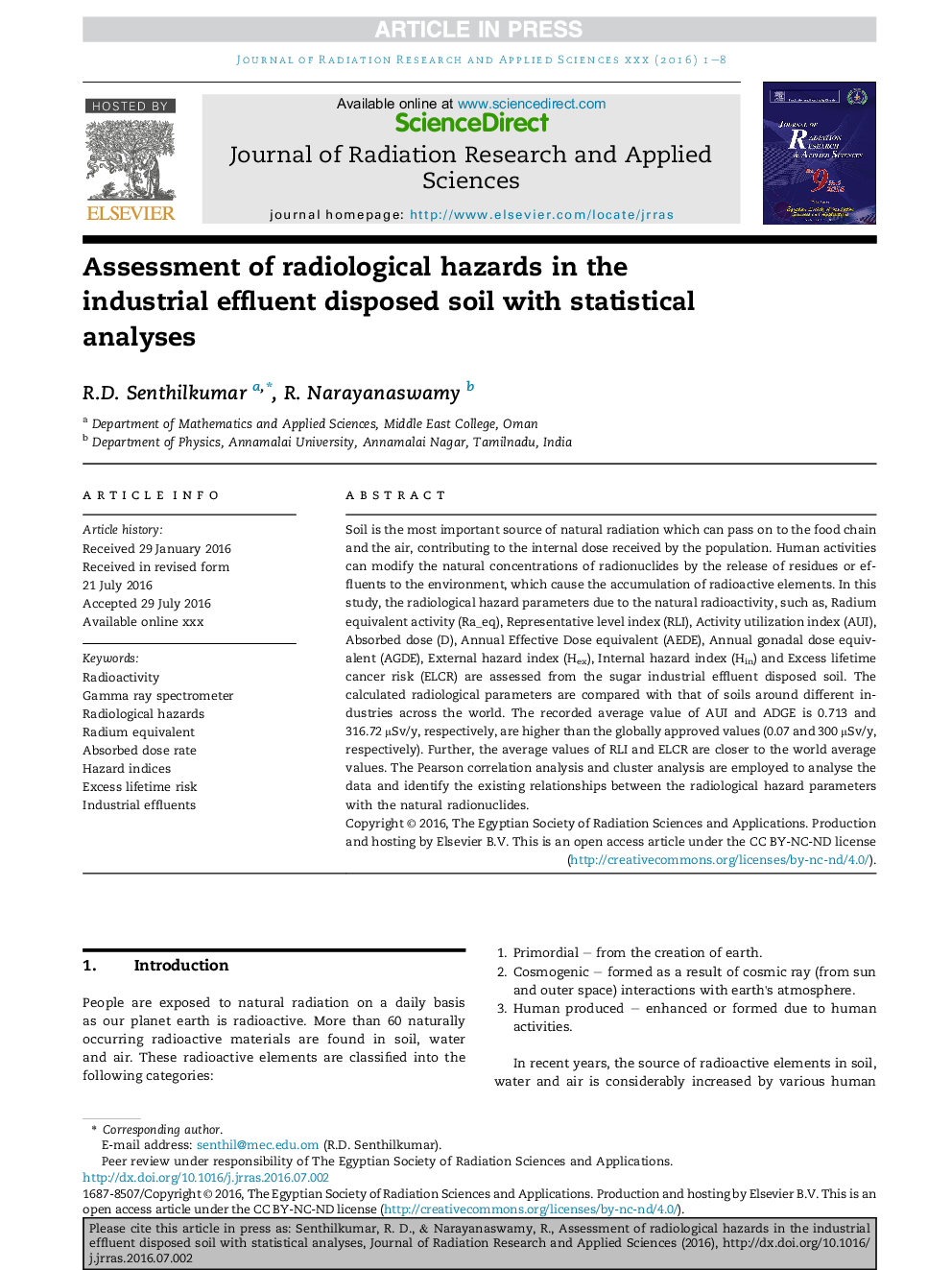| Article ID | Journal | Published Year | Pages | File Type |
|---|---|---|---|---|
| 5454497 | Journal of Radiation Research and Applied Sciences | 2016 | 8 Pages |
Abstract
Soil is the most important source of natural radiation which can pass on to the food chain and the air, contributing to the internal dose received by the population. Human activities can modify the natural concentrations of radionuclides by the release of residues or effluents to the environment, which cause the accumulation of radioactive elements. In this study, the radiological hazard parameters due to the natural radioactivity, such as, Radium equivalent activity (Ra_eq), Representative level index (RLI), Activity utilization index (AUI), Absorbed dose (D), Annual Effective Dose equivalent (AEDE), Annual gonadal dose equivalent (AGDE), External hazard index (Hex), Internal hazard index (Hin) and Excess lifetime cancer risk (ELCR) are assessed from the sugar industrial effluent disposed soil. The calculated radiological parameters are compared with that of soils around different industries across the world. The recorded average value of AUI and ADGE is 0.713 and 316.72 μSv/y, respectively, are higher than the globally approved values (0.07 and 300 μSv/y, respectively). Further, the average values of RLI and ELCR are closer to the world average values. The Pearson correlation analysis and cluster analysis are employed to analyse the data and identify the existing relationships between the radiological hazard parameters with the natural radionuclides.
Keywords
Related Topics
Physical Sciences and Engineering
Materials Science
Materials Science (General)
Authors
R.D. Senthilkumar, R. Narayanaswamy,
